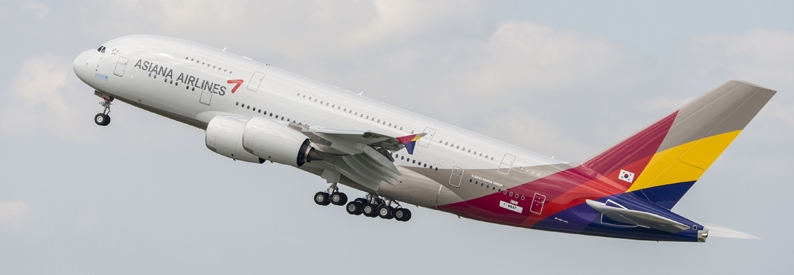South Korean Banks Call in Asiana Debt

Two state-owned South Korean banks are set to call in the remaining debt owed by Asiana Airlines (OZ, Seoul Incheon), according to Chosun Ilbo. The banks—Korea Development Bank (KDB) and Export-Import Bank of Korea (KEXIM)—are demanding repayment of KRW1.38 trillion (approximately USD957 million) by the end of this quarter. This move follows the final approvals for the merger of Asiana Airlines with Korean Air, which recently paid KRW1.5 trillion (USD1.04 billion) for a 63.9% stake in the beleaguered carrier.
Back in 2019 and 2020, when Asiana Airlines was grappling with severe financial difficulties and a failed takeover bid, both banks stepped in with crucial loans totaling KRW3.6 trillion (USD2.5 billion). Specifically, the Korea Development Bank provided KRW2.67 trillion (USD1.85 billion) while KEXIM lent KRW930 billion (USD645 million). These loans were critical in preventing the collapse of Asiana amid mounting debt and the dramatic impact of the COVID-19 pandemic on the aviation industry.
As the airline’s fortunes began to improve post-pandemic, it embarked on an aggressive debt repayment program. In 2022, Asiana repaid KRW180 billion (USD125 million), followed by a repayment of KRW940 billion (USD652 million) in 2023. In 2024, the carrier cleared KRW1.1 trillion (USD762.7 million) of its outstanding debt. Despite these repayments, a substantial KRW1.38 trillion remains unsettled, prompting KDB and KEXIM to take decisive action.
The banks’ decision to call in the remaining debt is linked to the completion of Asiana’s merger with Korean Air. Earlier in the year, as regulatory hurdles emerged—particularly from antitrust authorities—the possibility of the loans turning bad became a real risk for the banks. In response, the Korea Development Bank began exploring alternative strategies for recouping its funds, including the potential sale of Asiana Airlines. The current demand for repayment signals a firm stance by the banks to secure their financial interests as the merger finalizes.
Interestingly, the Korea Development Bank also extended financial support to Korean Air, providing KRW800 billion (USD555 million) to help finance the merger. That loan remains outstanding, with KDB indicating that it will pursue repayment once the merger is fully finalized.
This financial restructuring and debt recovery effort underscore the challenging landscape of the global aviation industry, particularly in the wake of the pandemic. For Asiana Airlines, the successful merger with Korean Air represents a critical turning point. The consolidation is seen as a pathway to stronger financial health and improved operational efficiency, while the banks’ active recovery measures reflect the heightened scrutiny on state-backed financial assistance in troubled industries.
As the merger proceeds, industry observers will be watching closely to see how the integration of Asiana into Korean Air’s operations unfolds, and whether the remaining debt demands will have any further impact on the combined carrier’s financial structure. In the meantime, the proactive actions of Korea Development Bank and KEXIM demonstrate a robust approach to managing risk and ensuring that public funds are recovered in an environment where state support has been pivotal to sustaining a major national airline.
Related News : https://suspicious-zhukovsky.67-21-117-18.plesk.page/?s=Asiana+Airlines
Sources: AirGuide Business airguide.info, bing.com, ch-aviation.com
